Every summer, I stop birding and turn my attention to butterflies and dragonflies. Now, as the season draws to a close, I feel an urge to summarize it somehow, to list its highlights and express its character. Was there anything strange or unique about this particular summer, any surprising development, that set it apart from all the rest?
I should note that all my outings take place in the city of Toronto. I don’t own a car. When I go to a park or other type of natural area, I usually get there by foot or by bike. There are advantages and drawbacks to searching for insect life in an urban area such as Toronto. The advantages include a rich diversity of habitats—parks, ravines, beaches—many of which either contain or lie adjacent to a water feature. The drawbacks consist of what I refer to as “the three P’s”: pollution, pesticides, and people (by which I mean crowds of people in their hundreds and thousands), all of which take a terrible toll on insect life.
In spite of the negative factors, I still see a good number of butterflies and dragonflies every summer and usually a good diversity of species as well. What distinguished this summer from its predecessors? As often, the season was defined by its weather. An unusually frigid and wet spring persisted into the middle of June. Perhaps as a result, the summer was a season of surprises. In the end, we saw some species we don’t usually see at all, and some that usually appear in small numbers turned out to be abundant.
For purposes of this summary, I’ll simply list my top three sightings in each category and provide a brief account of miscellaneous sightings for both. You might ask: What makes a sighting good, better, or best? In a word, rarity. Finding something rare seems to satisfy a fundamental human need, one with archetypal significance. It answers the desire we all feel to participate in a sacred quest, to discover the Holy Grail or the Pearl of Great Price. For the amateur naturalist, nothing can compare with the satisfaction you feel on finding something unusual. Certain people might call this childish, but I consider it profound. Anything that runs so deep and provides such a pure pleasure must answer to one of our more imperious needs.
Butterflies
Here are my top three butterfly sightings for the summer of 2019.
1. Funereal Duskywing. Seen in a weedy patch of wildflowers off the bike trail near Corktown Commons on July 24th. One of the larger Skippers, this Duskywing is distinguished by the bleached-white skirt that runs along the bottom of the hindwing. What a treat to find a butterfly that the Royal Ontario Museum’s Field Guide to the Butterflies of Ontario (the ROM Guide) lists as a “very rare, non-breeding migrant.” I’d seen this species once in Mexico but never before in Ontario.
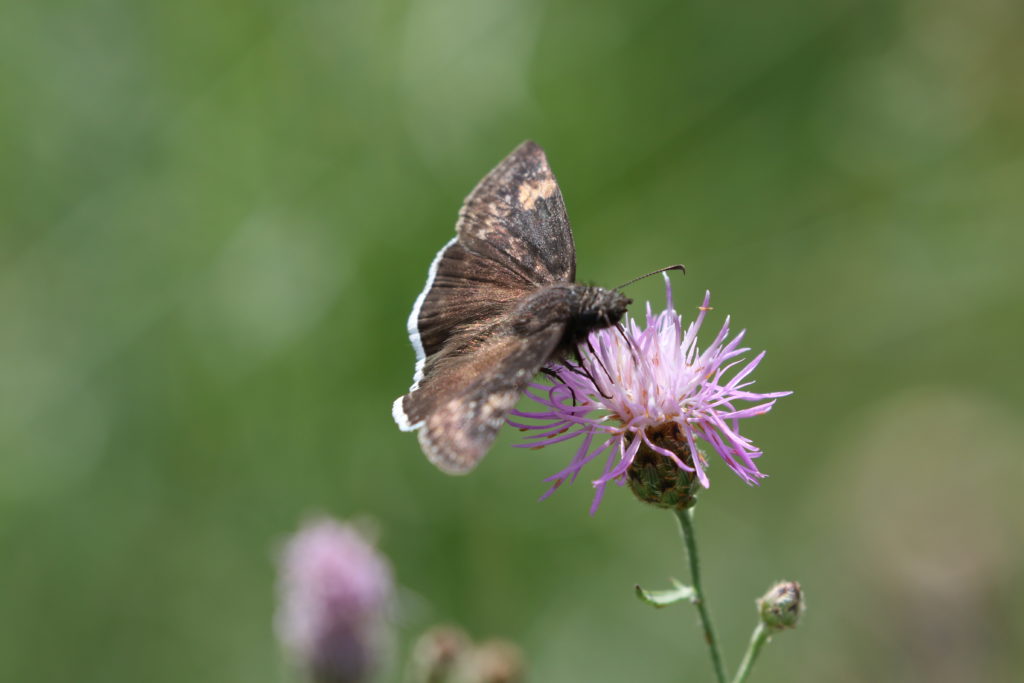
2. American Snout. This butterfly, with its weird profile thanks to the extended palpi or lips, is usually a “rare-to-uncommon breeding migrant” according to the ROM Guide. I’d only seen one before in Toronto, and that was two years ago. When the annual Toronto Butterfly Count turned up 13 Snouts in the middle of July, everyone knew something strange was taking place. Soon reports came in from all over the Toronto area of Snout sightings in good numbers. Over the next few weeks, I saw several of them at the Leslie Street garden allotments. The only explanation I’ve heard for their presence here this year is that an unusually warm spring in the American southwest, coupled with strong southerly winds, may have pushed the Snouts up and across Lake Ontario.
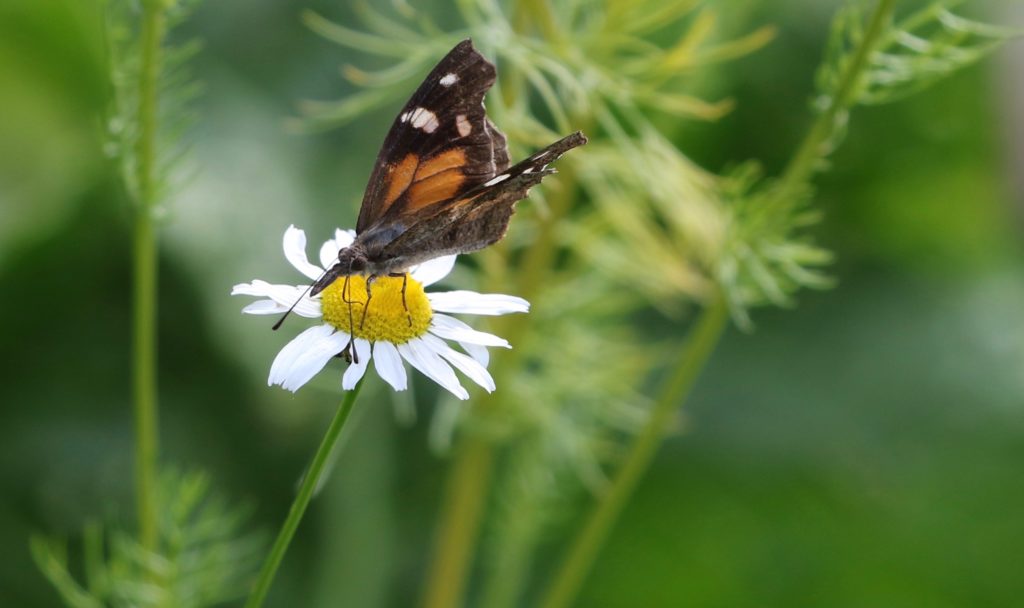
3. Snowberry Clearwing Moth. Listed as “common” in the Peterson Guide to Moths of Northeastern North America, this moth can still be difficult to find and even harder to photograph. It has a bizarre, hybrid look, as if it might be the bastard offspring of some midnight coupling between a bumblebee and hummingbird. Another example of a winged creature that I never tire of looking at no matter how often I see it.
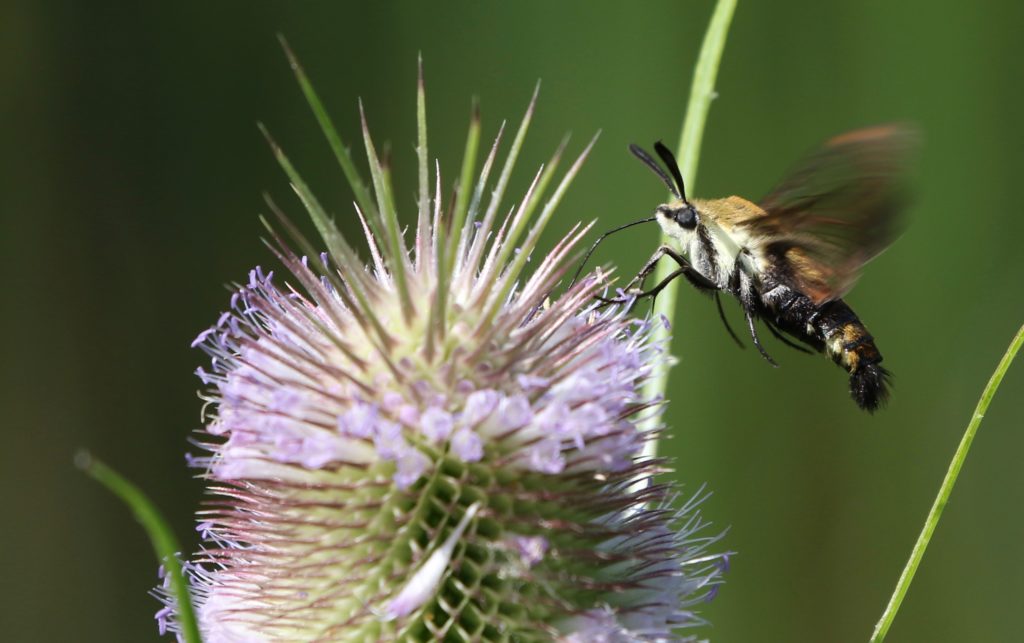
Miscellaneous sightings. Every July, I go to the Glendon Forest to see the Baltimore Checkerspots that breed in the marshy areas along the trail there. They’re usually in place early in the month, but this year, perhaps as a result of the cold spring, they didn’t show up till near the end.
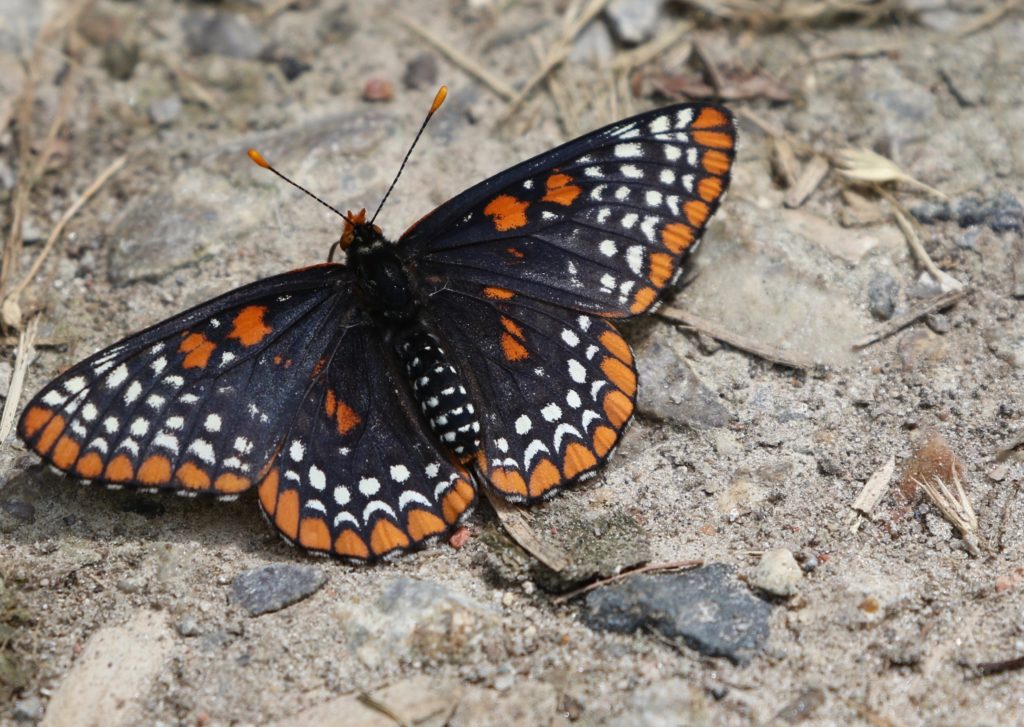
The Giant Swallowtail was another late arrival, but once it did appear it became abundant. I saw several on the Leslie Street Spit. They can be tricky to photograph because they seldom hold still and their wings vibrate even when they’re nectaring.
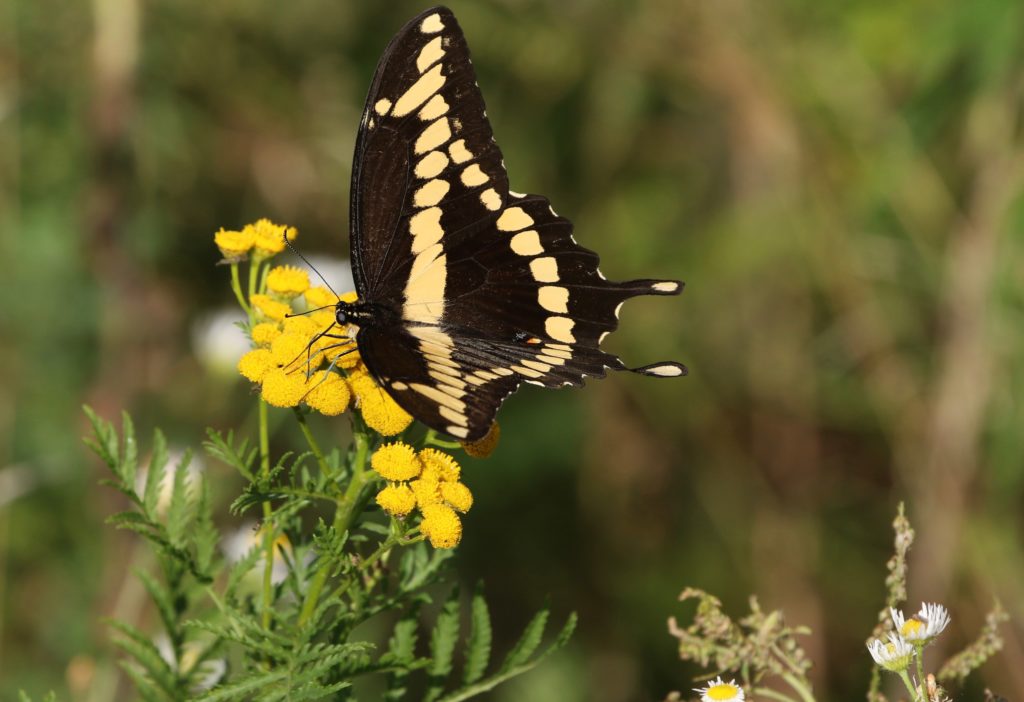
Dragonflies
Here are my top three dragonfly sightings for the year. Note that all three are in the Darner family. Darners are among the largest dragonflies in North America, and they are all strikingly colored. The can also be a challenge to photograph. As the Stokes Beginner Guide to Dragonflies notes, “darners are typically on the wing when encountered, sometimes high overhead, and rarely afford the eager observer much of a view. Even when perched, they are often high in a tree.” This eager observer considers himself lucky to have photographed the three darners below, all of which he recorded for the first time this summer.
1. Swamp Darner. Flew right across my field of vision while I was biking down a dirt path on the Leslie Street Spit on the afternoon of the summer solstice, June 21st. Against all accepted darner practice, it came to rest immediately in a bush on the side of the path. A huge dragonfly—well more than three inches long—and with mesmerizing sky-blue eyes.
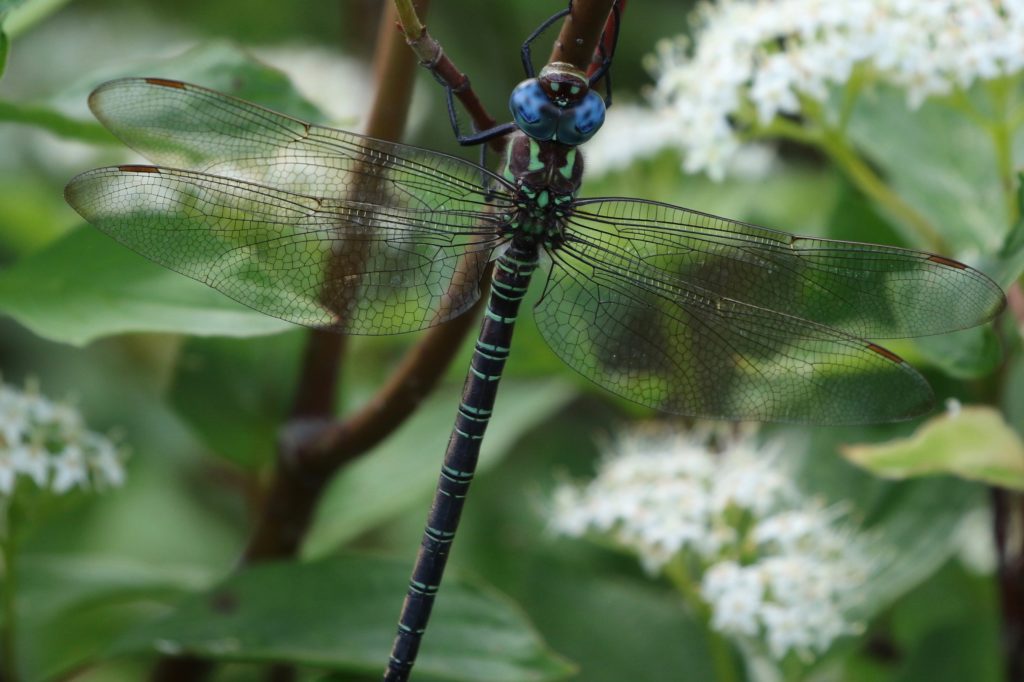
2. Black-tipped Darner. On August 31st, I spent the whole day on the Spit searching for dragonflies, hoping to photograph one of the “blue” or “mosaic” darners. I saw several in flight, but none would stop long enough for a photo. Finally, after seven hours, one flew across the same path where I’d seen the Swamp Darner two months before and draped itself on a weed stem. Admittedly, I’d put in the work, but I couldn’t help feeling privileged, blessed. A strikingly beautiful dragonfly.
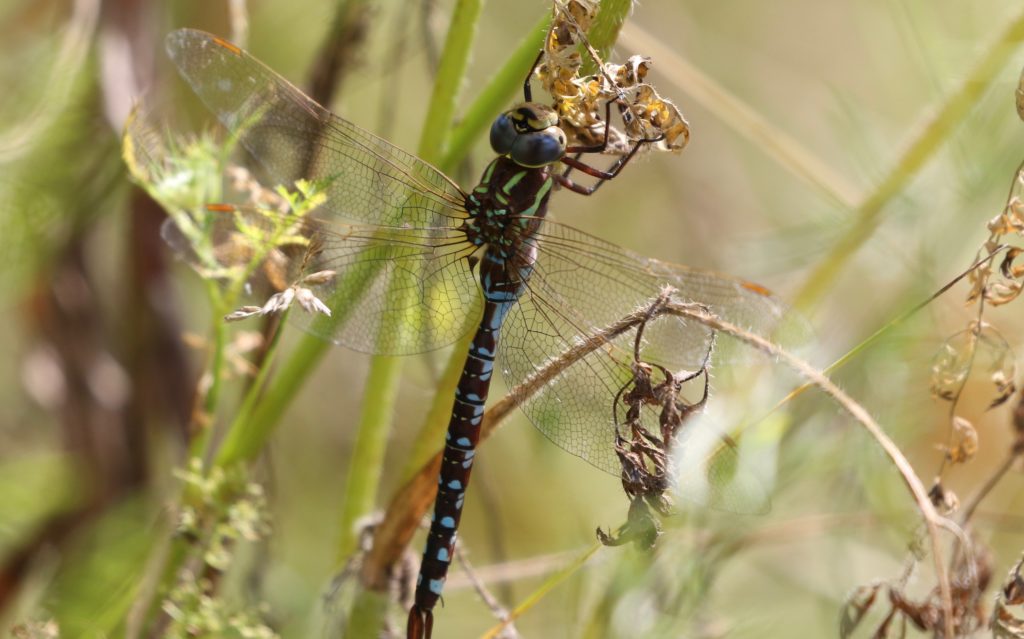
3. Variable Darner. Two days later, I was by a small pond in Taylor Creek Park. After a mere two-and-a-half hours of watching darners patrolling the shoreline, I was delighted to see this Variable Darner fly out of the pond and light on a nearby tree trunk. It allowed me to approach within a few feet and take as many pictures as I pleased. Another stunning beauty, another gift and cause for celebration.
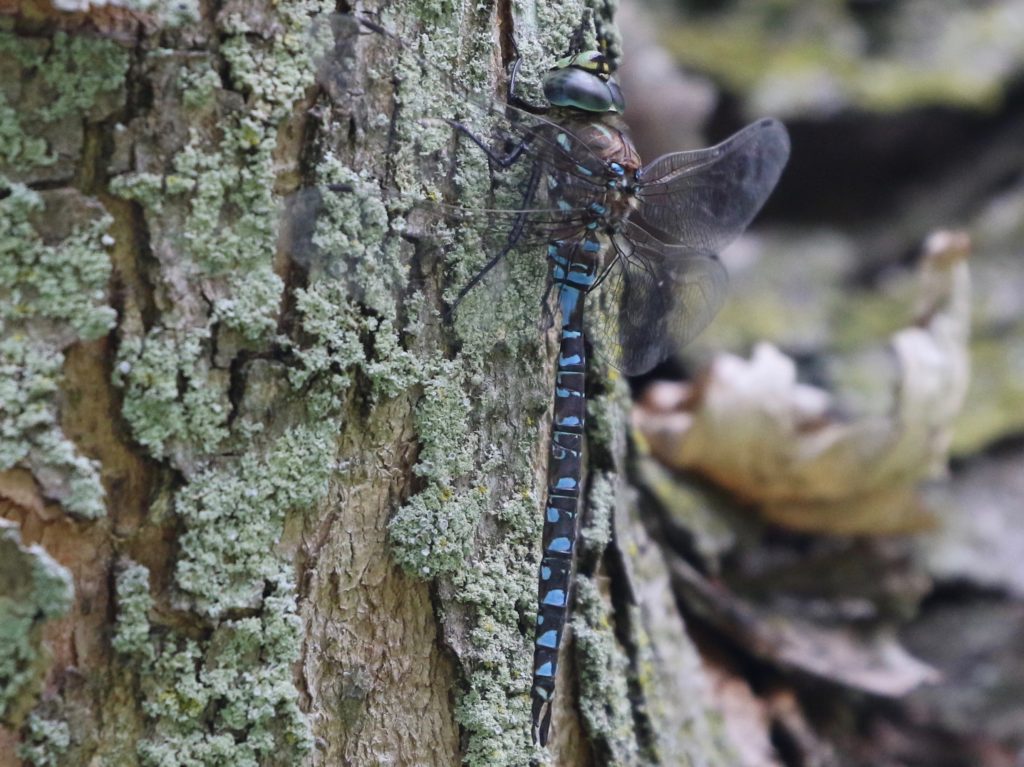
Miscellaneous sightings. The Painted Skimmer is listed as “uncommon” and “rather wary” in Dunkle’s Dragonflies through Binoculars. Also recorded on the summer solstice, which was something of a signal that this year was shaping up to be exceptionally good for dragonflies. The abdomen of the Painted Skimmer is such a vivid orange color that the artist in question might have been Van Gogh.
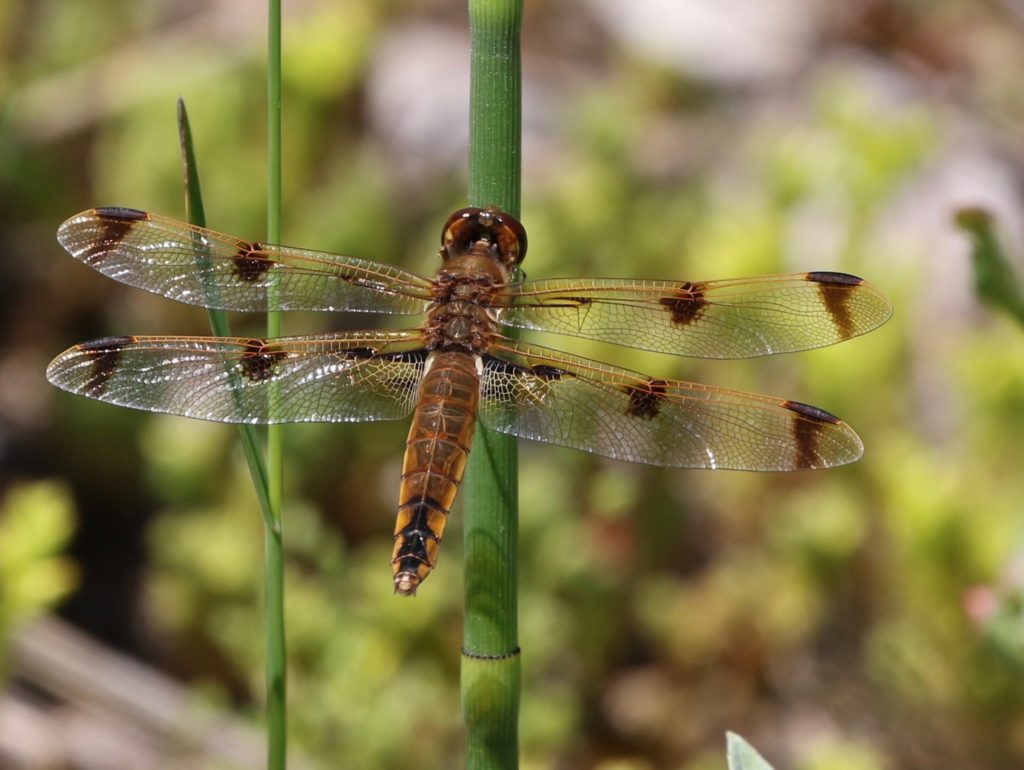
The Variegated Meadowhawk is native to western North America and only occasionally ventures into Ontario. This year, perhaps again because of the unsettled weather patterns, it was semi-abundant in the Toronto area. I saw a male at Ashbridges Bay on July 20th and a female on the Leslie Street Spit a month later. Hard to say which color combination I prefer, but the scarlet rings on the male’s abdomen may just win out in the end.
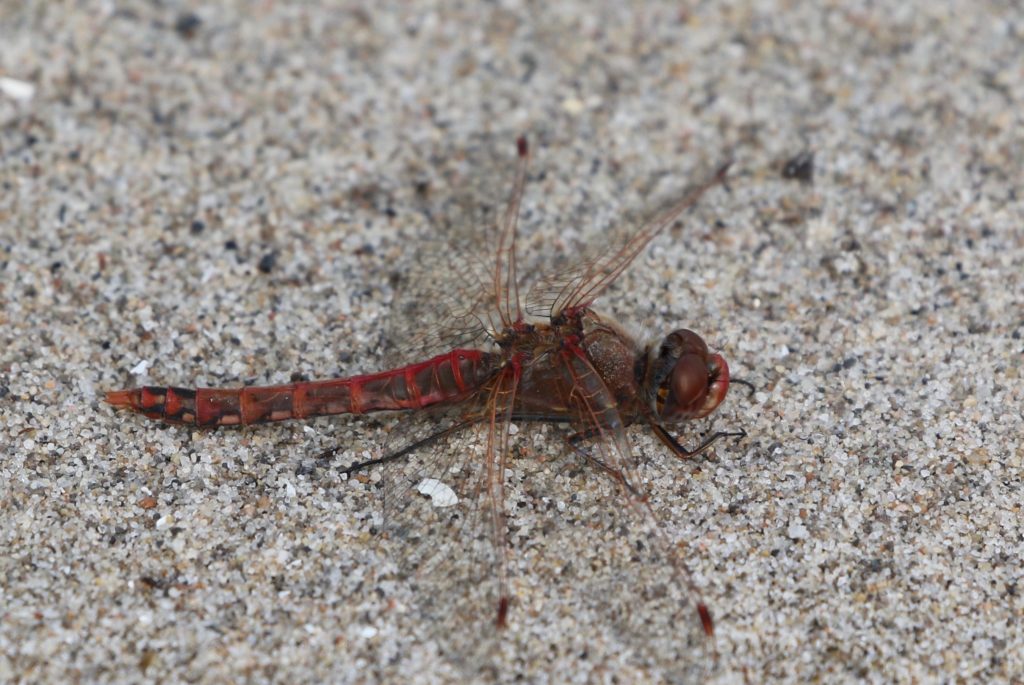
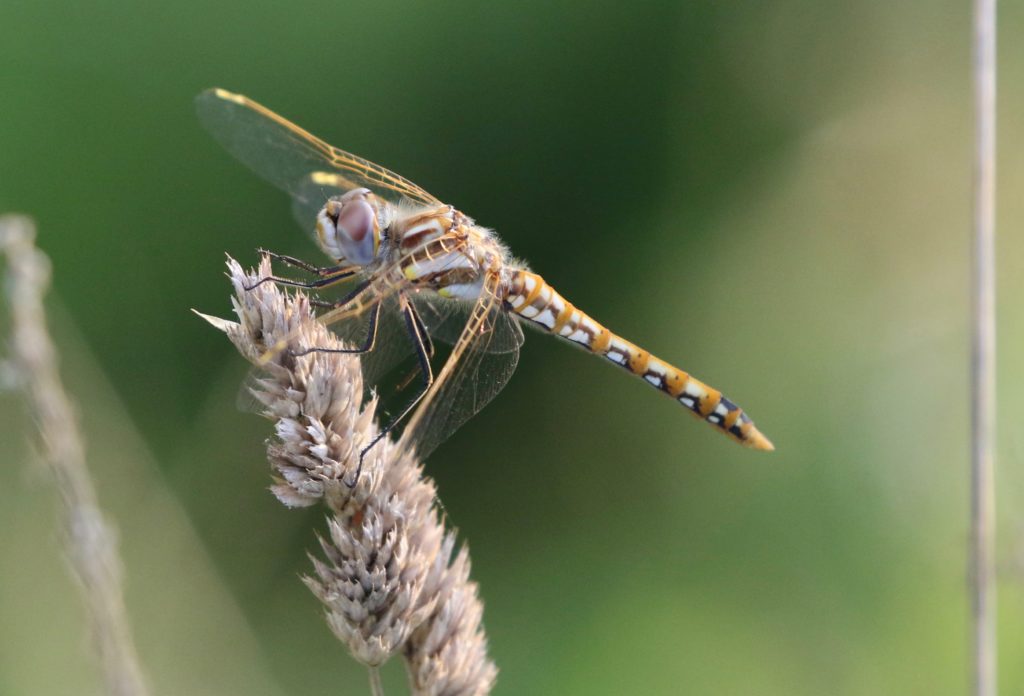
In summary, if I had to characterize this passing summer in a word or phrase, I’d call it a season of surprises, of unexpected sightings. A season that impressed me again with the richness of Toronto’s wildlife, a wealth of creatures I might never have suspected existed if I hadn’t gone out to look for them.
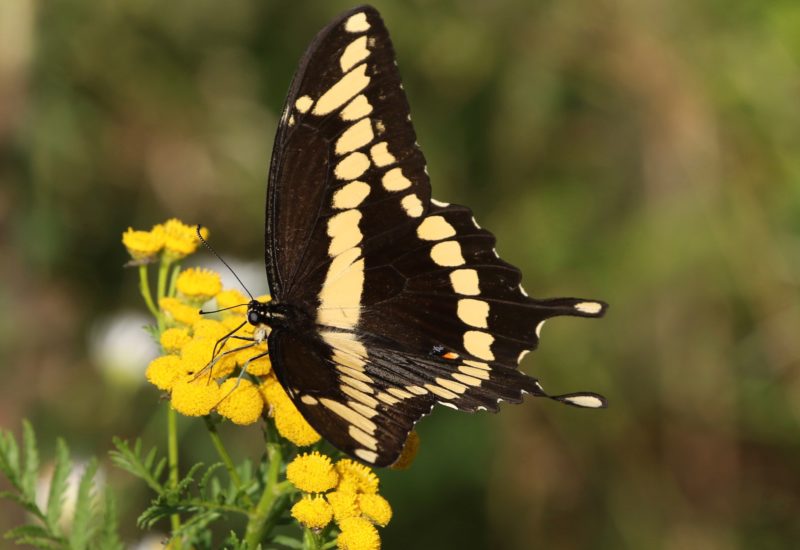
Excellent post and wonderful observations! I’m glad your summer was so rewarding.